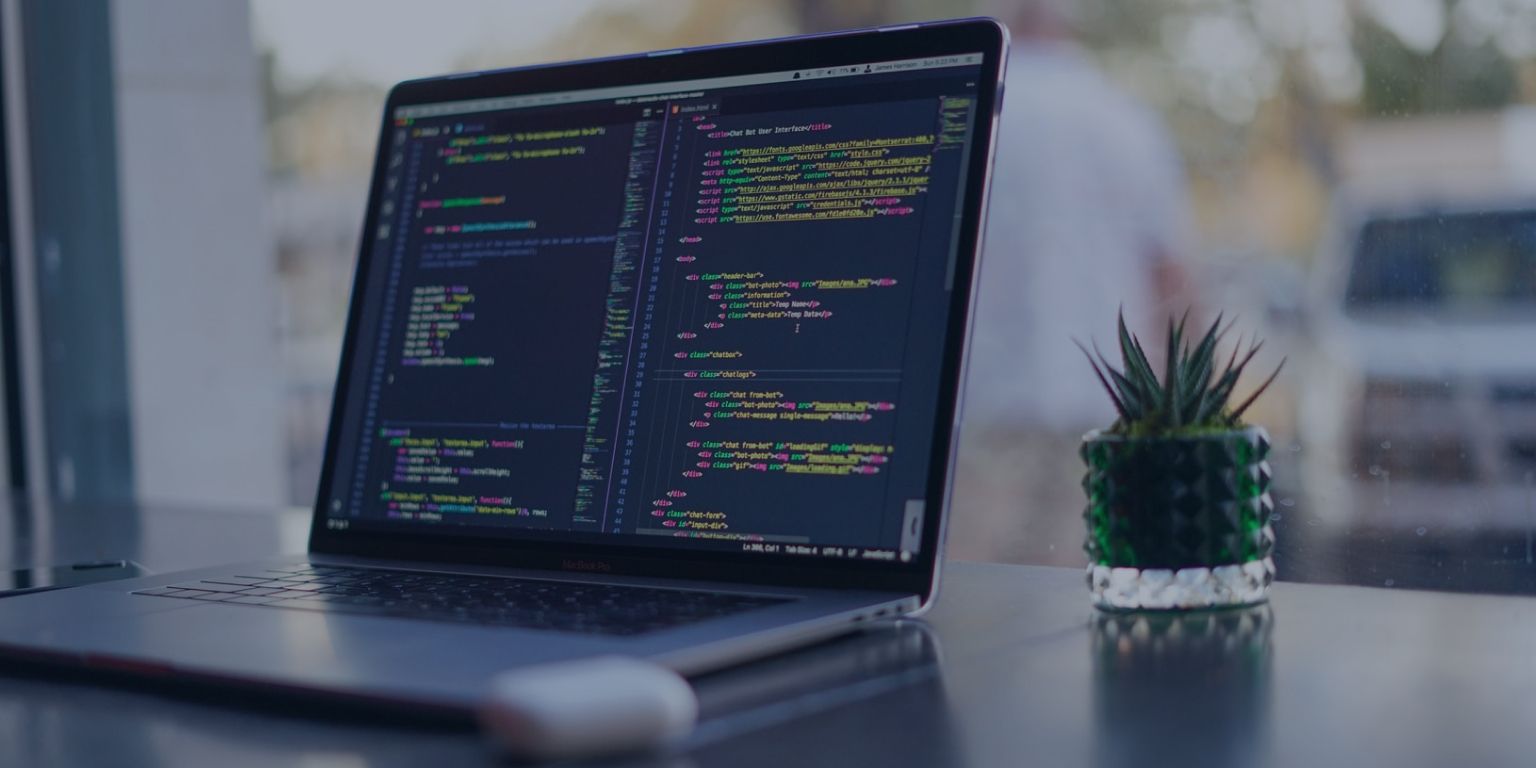Metric Based Code Complexity Analysis - How Effective Is It?
04 October 2021 8 min read

“What is a good measure of code complexity? Why is code complexity important? What is the use of code complexity testing? How can you calculate the complexity of a program? These are just some of the questions that programmers usually ask when they are given the task to create or implement a new program.”
Unfortunately, we don't live in a perfect world. Therefore any application's success depends on how well it is integrated with various operating systems. No less important is the fact how efficiently business logic is used from an operational point of view. Code Complexity Analysis is a crucial stage of the software development cycle in which the entire software life-cycle is investigated for any possible defects and bugs. It deals with the detection, evaluation, and resolution of bugs or defects. It helps in reducing the overall cost of development.
To begin with, Code Complexity Analysis helps you to identify the amount of unnecessary code within your application. The process thus improves the overall performance of your application. When we discuss the cost of software development, we generally focus on its technical aspects.
BENEFITS OF CODE COMPLEXITY ANALYSIS:
A successful application must meet business objectives and be robust in its handling of database operations. To help you assess the relative complexity of your application and build quality code, a Code Complexity Analysis tool is very helpful.
Thus, Code Complexity Analysis plays a vital role in detecting vulnerabilities in your application and can be used together with automated tools for efficient application security management.
Identification of Source Code Complexity
With the use of Code Complexity Analysis, you can determine the complexity of the source code files generated by a particular programing language or programming platform without requiring manual scanning of the program source code.
Manual Code Scanning may sometimes identify very complex expressions that look like ordinary functions but which are syntactically hidden within the code of the program that is originally written. In such cases, the coding base could be exploited to perform security attacks against your organization.
Reduced cost of Removing Technical Debt:
No doubt, it’s important to understand the nature of code ambiguity as it is essential for code complexity analysis and fixing the issues. This task can be easily performed by considering the definition of complex functions. In simple words, a function with more parameters has a higher level of parameters which requires a high level of analysis.
When you are dealing with any sort of measurement, implement is with great care. Mostly, the implementation of analyzers can be quite cumbersome. Hence, you can take the assistance of an expert in this area to facilitate the process.
HOW TO CALCULATE CODE COMPLEXITY
Developers work in the industry, in companies that make and distribute applications. These companies rely on their teams to produce software that can run across multiple operating systems, with all of the expected security features.
To test this software, they use metrics to determine not just how fast the program runs but also how well it follows a user-friendly design. When these programs are released to the public, companies expect that they will perform well both in consumer and industry applications.
Use of Complexity Analysis Metrics:
One way to measure the code complexity is to use metrics. Companies can use standard metrics, or they can use specially developed metrics that take into account several different characteristics of the software.
When looking for the best metrics to use, however, companies should be aware of how each metric will be calculated. Some methods may involve the use of a programming language that is not compatible with all systems, so it is important to consider the type of coding system that will be used.
Some important points regarding code complexity metrics:
1. Time Taken To Run The Program:
Code Complexity can be measured in terms of time complexity analysis code by looking at the time it takes to run the program. If it takes longer to run than what is expected, it could be a sign of a problem that can be solved.
2. Comparing the time to create and time to run the program:
Apart from the time complexity analysis code is to compare the time necessary to create the code with the amount of time it takes to run it. This shows the manager that his team is being inefficient when it comes to the creation of new code and should be rectified as soon as possible.
3. Generally Observable Metrics:
Those that developers can directly observe and measure include time to generate new code, number of bugs found and security vulnerabilities found, as well as cycle time.
4. Indirect Metrics:
But there are also indirect metrics that managers can use to gauge such things as bug hit/miss ratio, spike vulnerability rates, overall release cycle time, and the number of releases in a typical development cycle. Some of these indirect metrics are collected from the actual code itself, while others come from the user or client reports.
5. Cyclomatic vs Non-Cyclomatic Metrics:
Two types of metrics can be measured when it comes to code complexity analysis. Those used by developers and testers can be called cyclomatic complexity metrics and noncyclomatic complexity metrics.
Cyclomatic Metrics:
Cyclomatic Metrics are designed to gauge the rate at which software programs change. A good example of a cyclomatic metric would be the time it takes for a new line of code to be created or the number of duplicate lines in it.
Non-Cyclomatic Metrics:
Noncyclomatic measure the tendency of those changes to repeat themselves. Two types of metrics can be considered for code complexity analysis.
Either way, these measurements are important for getting an idea of how well a team's code works and if their processes are efficient.
CODE COMPLEXITY ANALYSIS TOOLS:
Some of the best Java code complexity analysis tools that work best for Python and C++ are SonarQube, Raxis, PVS-Studio, Reshift, and dozens of others. Once the code complexity has been identified, you should check all the parameters of the functions and use Analyzer to identify the root cause of the issue. Once you can recognize the main culprit, you can start fixing the issues one by one. Generally, the most common errors are missed parameters, cyclomatic complexities, and ambiguous paths.
How teams use Code Complexity Analysis Tools?
Once a team has gathered all the data that they need to calculate their Java code complexity Analysis metrics, they can still choose to build one path or the other. They can either calculate a set number of paths or a set combination of paths, or both.
If they calculate a single path, they can still use one or more indicators to determine which path to follow: for instance, if one metric shows that path A needs to be changed, then they should change it along that path. However, if two metrics both indicate that it is a poor path to follow, then they should change it following both metrics. This way, they have a better understanding of what needs to be changed and a better path to take to achieve their goal.
METRICS TO MEASURE CODE COMPLEXITY:
A very good practice for program engineers is the creation of very complex applications with a huge count of functions. Such a vast application needs a special kind of measure to determine cyclomatic and non-cyclomatic complexity along with the effects of multiple inputs and executions. These metrics can greatly assist the quality assurance team in finding defects early before they cause any severe software issues.
1. SLOC (Source Lines of Codes) Metrix:
Source lines of code (SLOC), sometimes referred to as lines of code (LOC) is a technique provides that counts the number of lines in the textual body of original code of the program to determine its size. The value of this measure for Windows NT 3.1 is around four to five million and around 6 million for Linux kernel 2.6.
Surprisingly it is fifty six million for Linux kernel 3.6 and around forty six million for Windows XP. This metric actually is associated with the ambiguity of the code in a way that more complex or large is the code base, more is the value of this metric.
2. Cyclomatic Complexity Matrix:
A cyclomatic is a measure of the distribution of the functions call over various inputs or executions of the software. If the number of the metric is more, it is difficult for the programmers to write reliable programs.
Programmers specify the desired cyclomatic complexity metric in original codebase of the application. Later a report detailing the cyclomatic complexity for various inputs, executed during the software’s development cycle is generated.
Using the Code Complexity Analysis tools, it’s simple to monitor the cyclomatic ambiguity of a piece of code base. The developers can then employ the report to optimize their coding to eliminate the risks of developing unreliable programs.
3. Scalable Performance Metrics:
Through Code Complexity Analysis, you can measure the performance of individual functions but you cannot determine their values over different inputs or executions.
Thus, you cannot calculate the effect of a single bug on the overall performance. You need to deploy very Benchmarking-oriented tools for very detailed and accurate metrics that will give you a detailed picture of your software's performance characteristics over various inputs.
4. Maintainability Index:
The Maintainability Index estimates a program's total maintainability score. Most engineers do not like to spend much time looking out for the causes and defects of the code complexity but spend a lot of time in coding. Hence, these people prefer using metric systems like the refactorings or the code complexity.
The maintainability Index is more of an empirical metric. The amount of lines of code in the program is weighed against Cyclomatic difficulty and Halstead volume. This study provides a broad overview of software complexity.
5. Code Reviews:
One of the popular metrics that is quite effective in finding out the root cause is code reviews. However, code reviews can be time-consuming, and hence, it is not always possible for every engineer to update the code manually.
However, there is a need to understand that these are just guides and that they cannot always define your code complexity. It is advisable to use both metrics and code complexity analysis to look out for the root cause of the issue. Once you succeed in solving the issue, then only you can decide what to do about it.
COST OF IMPLEMENTATION:
However, sometimes cost of implementation may be considered as an important factor to be considered here as well. One way of reducing cost is by removing or pruning features that are not required by the customer. While removing some features you can get rid of useless classes and functions, which consume an unnecessary amount of time during execution. Moreover, code complexity analysis tools help you to detect unwanted usage of variable or class which is not intended. In addition to this, it helps you to trace the problem areas, which have developed due to the wrong usage of parameters or keywords. So, it deals with the tediousness of the coding and class documentation process.
CONCLUSION:
The primary purpose of this article is to provide an objective way to compare various Code Complexity Analysis metrics. The complexity of a particular program code or application should be compared against the specifications that have been provided by its creators. It is meant to show employers or managers the average level of complexity that their team must strive to maintain during any given project.
Code Complexity Analysis metrics can be a complex topic that requires your deep understanding of software development, but it can be worth the effort as they can provide a concrete picture of how your application behaves over different inputs and executions.1.





